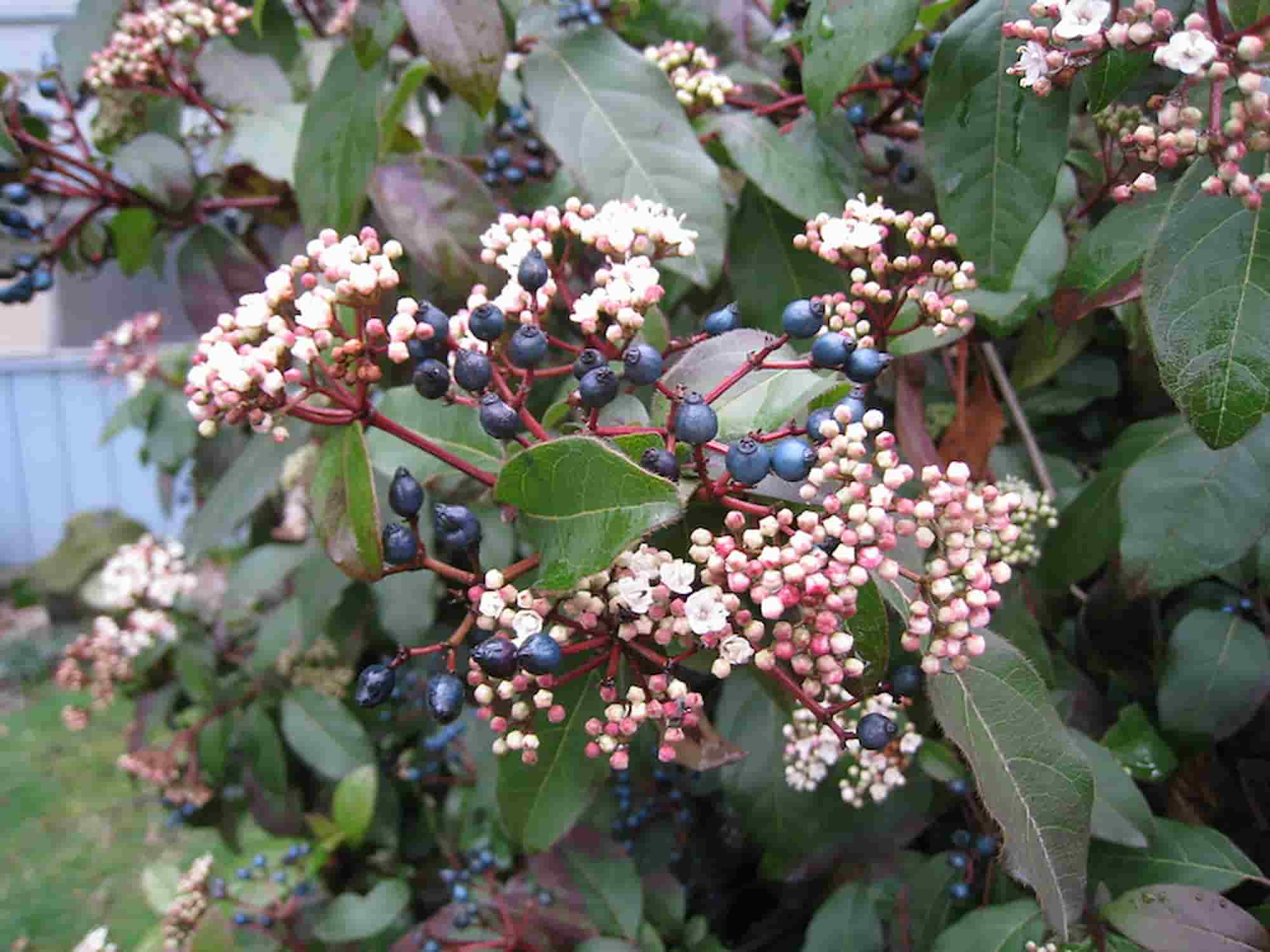
Diseases and pests of laurustinus
How to identify, treat, and prevent diseases and pests of the bay laurel
Contents
Most often used in hedges, laurustinus (Viburnum tinus) belongs to the large family of viburnums. Particularly accommodating, this bushy bush with sturdy branches is not fussy about soil type (as long as it is well-drained) and withstands both cold and salt spray, urban pollution, or strong winds. This bush, easy to prune, has obvious appeal due to its abundant and fragrant flowering in the heart of winter. Its small white flowers, sometimes slightly pink, indeed bloom from November until almost April. Afterwards, the laurel tin is covered in blue-black berries that birds love (but are toxic to humans). Easy-going, the laurel tin can still be susceptible to a few diseases. We explain how to spot, prevent, and treat them naturally.
Viburnum whitefly
Description
The whitefly (Aleurotrachelus jelinekii) is a small white fly specific to laurustinus. It is a piercing and sucking insect from the hemiptera family that feeds on the sap of bushes. In summer, it can be seen flying around the laurels. Its larvae are identifiable by the shell they form on the underside of the leaves, often ranging in colour from green to yellow. In winter, these shells turn black and become embedded in a whitish wax.
Symptoms
It is not easy to spot unless brushing against the foliage, which can become sticky with honeydew in the event of an attack. Additionally, sooty mould will develop.
Prevention
- To prevent an attack of whiteflies, nettle manure proves to be a powerful repellent.
- Some flowers also seem effective in encouraging whiteflies to look elsewhere. Therefore, planting marigolds, basil, and arnica near laurustinus can be beneficial.
Natural treatments
If the damage is already done, quick action is necessary as whiteflies reproduce rapidly and can form white “clouds” at the slightest touch of the plant.
The main natural treatment against laurustinus whiteflies remains black soap mixed with a few drops of vegetable oil.
The laurel thrips
Description
This polyphagous hemipteran (Heliothrips haemorrhoidalis) is a piercing and sucking insect that perforates the cells of plant organs to feed on them.
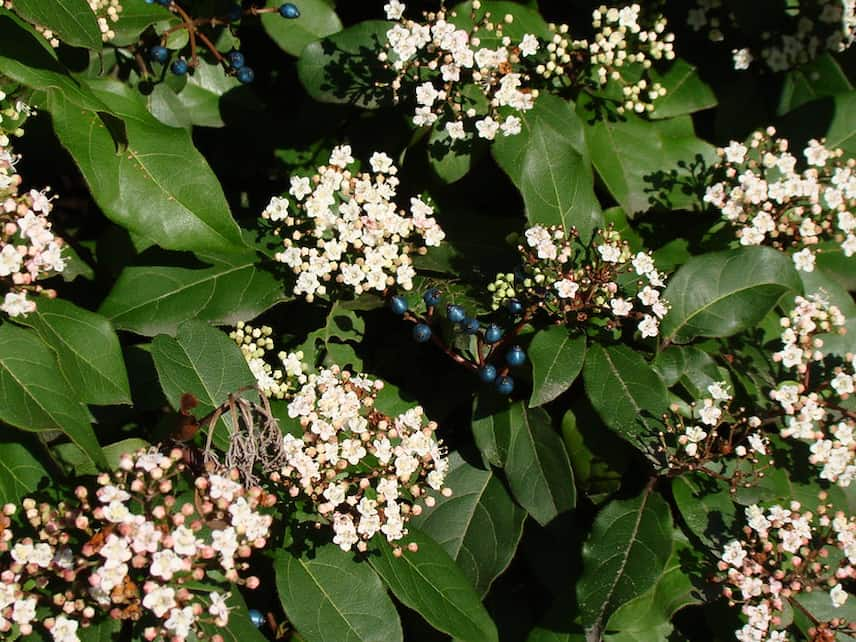
Very difficult to see with the naked eye, it has feathery wings. In winter, it shelters in plant debris, and females lay eggs under the leaves. It prefers warm temperatures.
Symptoms
Initially, black spots speckle the leaves, corresponding to droppings. The leaves gradually lose pigmentation and turn brown.
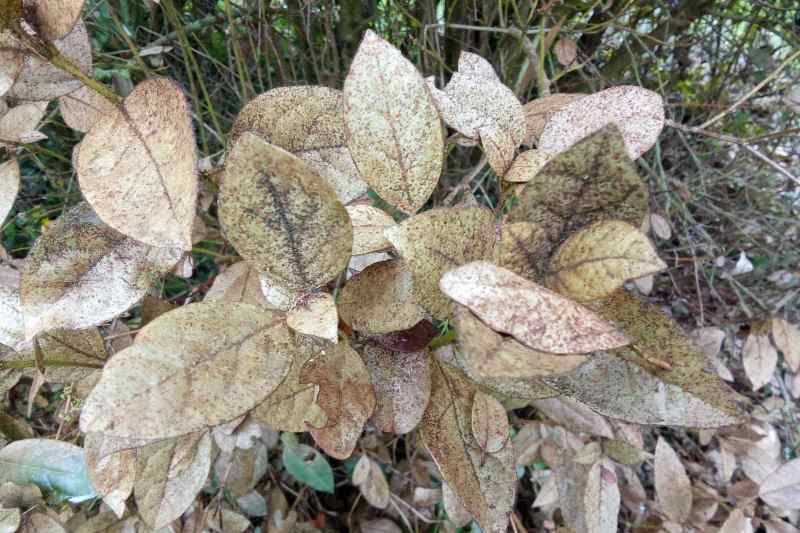
A typical silver and speckled coloration (photo Gwenaëlle David Authier)
Prevention
As thrips develop mainly in warm conditions, the best prevention against an infestation is to water early in the morning, focusing on the undersides of the leaves. Additionally, remember to clean up dead leaves at the base of the bushes, which provide an ideal shelter for thrips.
Natural treatments
Once again, diluted black soap in water proves to be an effective treatment in the case of a severe infestation. Spray on the undersides of the leaves.
Discover other Viburnum
View all →Available in 3 sizes
Available in 2 sizes
Available in 1 sizes
Available in 1 sizes
Available in 4 sizes
Available in 2 sizes
Available in 1 sizes
Available in 4 sizes
Available in 2 sizes
Available in 1 sizes
The viburnum beetle or viburnum chrysomelid
Description
The viburnum beetle (Pyrrhalta viburni) is a beetle that feeds on the foliage of laurel tin. At the end of summer, females lay eggs in the bark of young shoots. The larvae, which resemble yellow caterpillars with black spots, hatch in spring and devour the young leaves.
Symptoms
The larvae and adults of the viburnum beetle feed solely on the foliage, giving it a lace-like appearance. In the case of a massive attack, only the veins remain. The attack occurs from May until the first frosts. The beetle does not kill laurel tins but seriously damages the leaves.
Prevention
It is preferable to plant laurel tin and, more generally, viburnums in sunny locations.
Natural treatments
The main treatment involves cutting off the branches bearing eggs, which are most often found at the tips of last year’s shoots. They can be identified by small black bumps visible on the branches.
Read also
Viburnum: 8 successful pairing ideasThe otiorhynchus or weevil
Description
The vine weevil (Otiorhynchus sulcatus) is an insect from the weevil family. The female lays her eggs in the soil from July to October. One to three weeks later, the larvae, which resemble white worms, attack the roots and then the collar of laurel plants over two years. Afterwards, the adults feast on the leaves at night.
Symptoms
The leaves are punctured, then the edges become crenate and form a lace-like appearance. Eventually, they are literally devoured.
Prevention
- Watering and mulching hedges and flower beds help limit egg-laying.
- Digging also brings the larvae to the surface, where they can be eaten by birds or hedgehogs.
Natural treatments
The only truly effective treatment is night hunting with a torch.
If you have clearly identified the enemy, certain nematodes, available in a powder form to be diluted, can prove effective.
Root rot
Description
Root rot is a cryptogamic disease caused by a fungus known as armillaria. Its highly resistant mycelium develops around dead wood before attacking the base of the trunk and the root system.
Symptoms
Unfortunately, when symptoms are visible, it is too late. The fungus manages to insert itself between the bark and the trunk. This is noticeable by a slowed growth of the bush. When removing a piece of bark, a white felt-like growth can be seen.
Prevention
- Eliminate diseased or weakened laurels or stumps of other trees nearby
- Improve soil drainage
Natural treatment
There is no effective treatment against armillaria. The only solution is to cut and remove by burning all affected parts, including the roots. Then, the soil where the affected bush was planted should be removed to a depth of 50 cm. Leave the hole open for a year and do not replant any tree or bush.
Phytophthora
Description
Phytophthora ramorum is a plant pathogenic agent identified in the 2000s that affects many bushes, including viburnums. Polyphagous, this pseudo-fungus spreads from one variety to another via wind and rain. With a rapid life cycle, it disperses through spores that germinate on all parts of the plant: roots, stems, branches, and leaves.
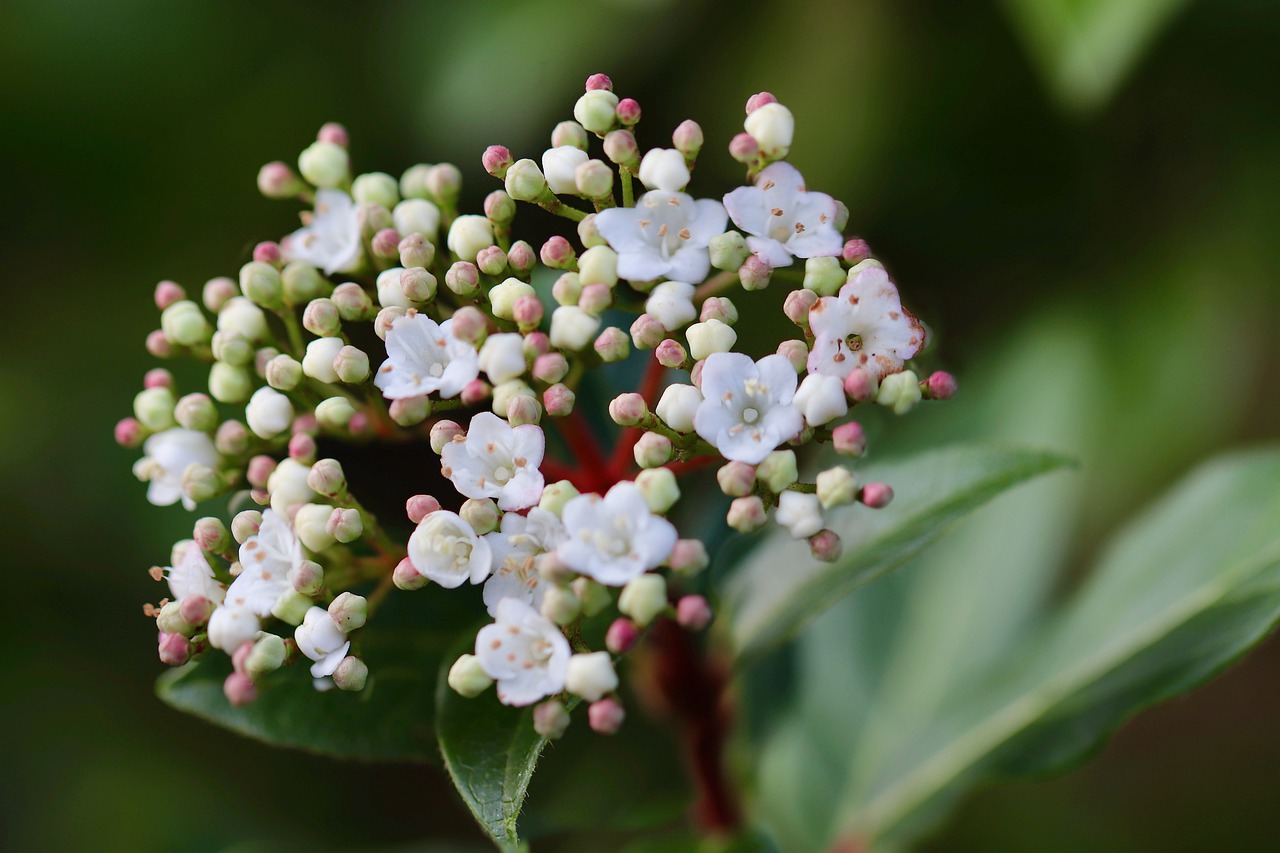
Symptoms
Necrosis appears on the stems and leaves, often starting from the tip or the petiole. The leaves turn red and discolour before wilting and falling off. In the most severe cases, the stems and branches die.
Prevention
As Phytophthora ramorum primarily develops in humid environments, it is essential to have well-drained soil. Additionally, as pruning can be a source of contamination, it should be done during dry periods.
Watering should be limited, and avoid a sprinkler irrigation system.
Natural treatment
There is no way to treat this oomycete. The only solution in case of infestation is to cut and burn the contaminated laurel tin.
- Subscribe!
- Contents
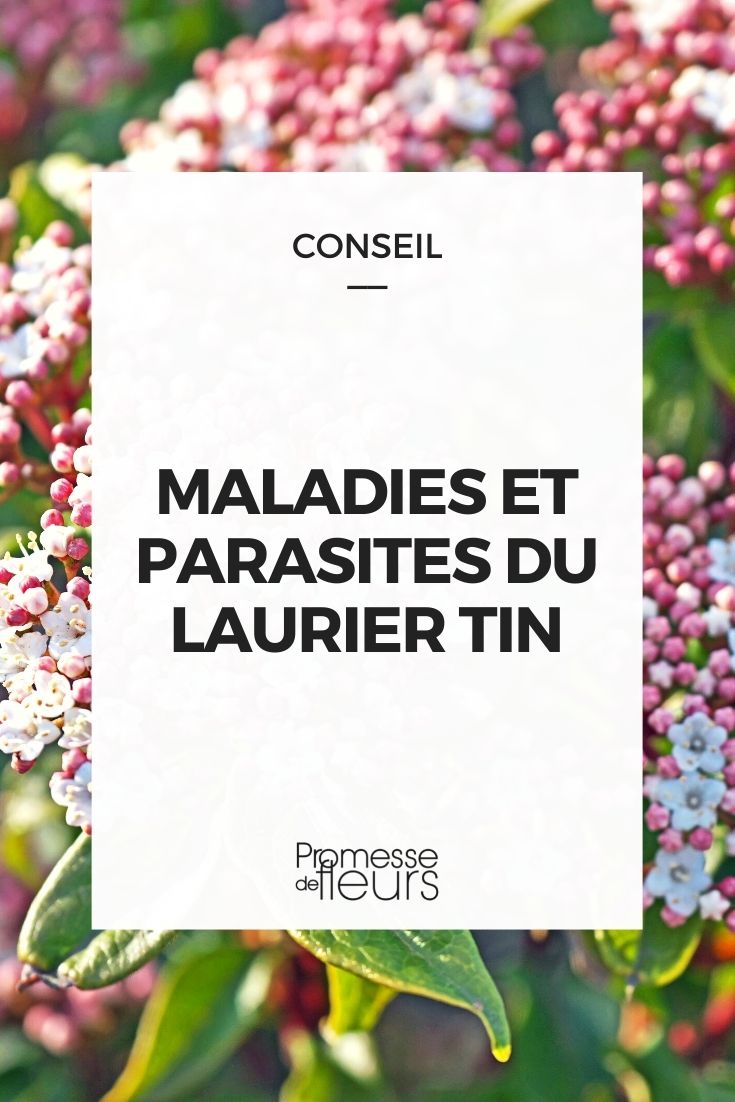































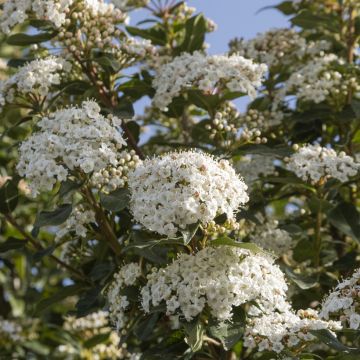
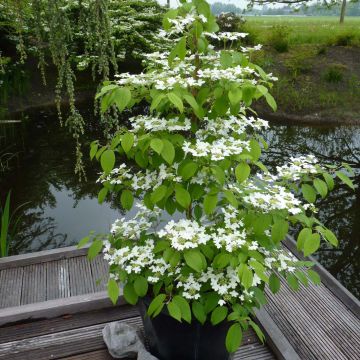
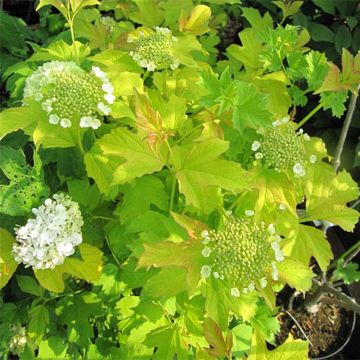
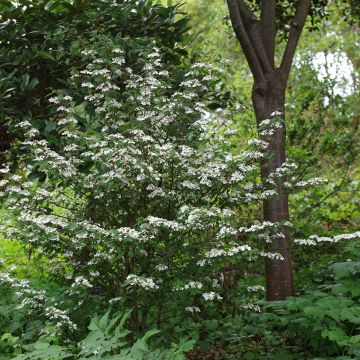
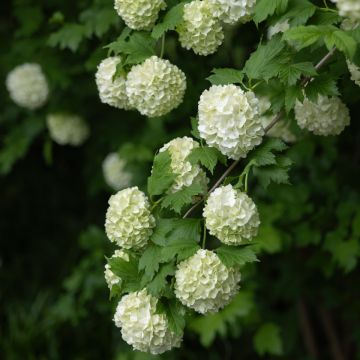
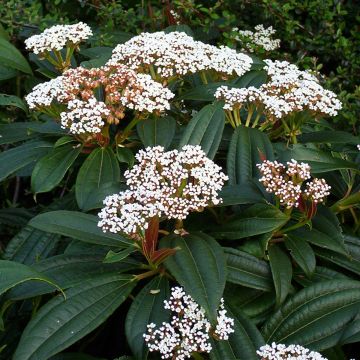
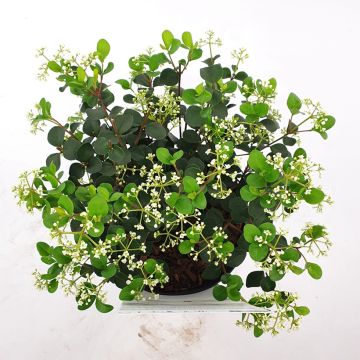
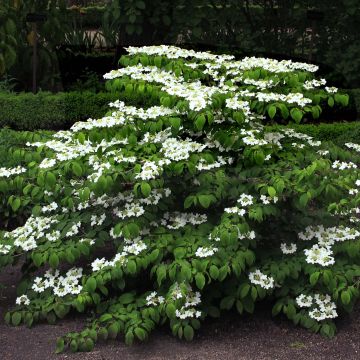
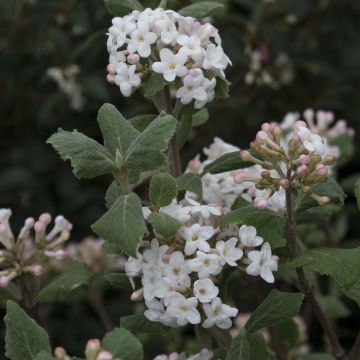
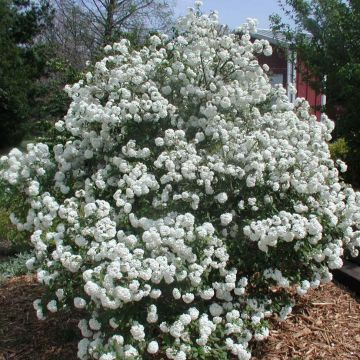
Comments